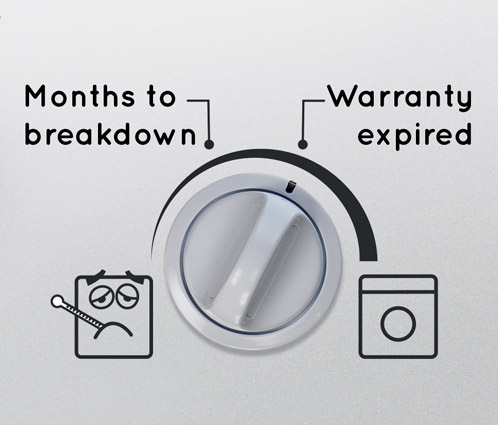Even appliances suffer from planned obsolescence


Ever try to get a replacement part for some item in the household, like a refrigerator or washing machine only to find the part isn’t made anymore? It’s called planned obsolescence, something manufacturers plan for to keep people buying more stuff.
Name the product and there is planned obsolescence
Manufacturers, for a long time, have been building a feature into their products solely for their benefit called “planned obsolescence.” In other words, a product is made with the knowledge and intention of it being obsolete within a few years. One could try and make some sort of trite and catastrophically boring statement about “technology,” “paradigm shifts” and “innovation.” Sometimes the business propaganda crowd has a fair point; CDs are better than cassettes and the iPod was better than the Discman. Flat-screen televisions have better picture quality than most cathode ray tube sets. However, it’s mostly a load of dingo’s kidneys. The idea is to get people to throw the old one away and just buy a new one, thereby putting more money in corporate pockets.
Appliances awash in it
A recent post on The Consumerist has the story of a man who, seven years ago, paid $2,000 for an LG washer and dryer set. The washing machine tub, as soon as it was out of warranty, went off-kilter, making the machine noisy, but operable, but when dryer stopped working, but when the man called about the replacement part. He was informed by customer service that the part wasn’t made anymore and that the machines were ”not meant to last.”
Anything that costs $1,000 should be.
It’s been going on for some time; Consumer Reports posted a bit from the archives in 2008, about issues from that publication in the 1960s reporting that appliance makers were shortening warranties, indicating that some companies were hip to the idea even then.
Empirical studies aren’t exactly rife concerning planned obsolescence, but a plethora of blogs and op-eds will swear to how quickly things wear out and how much harder it is to fix them than replace them. Anecdotes obviously can’t be taken as gospel as people tend to whine and wheedle about things, but as a post on the Houston Chronicle points out, Americans spend an estimated $15 billion on appliances annually; durability, therefore, becomes the enemy.
Ways to beat it
According to the great internet oracle Wikipedia, planned obsolescence falls into two categories, obsolescence of desirability and obsolescence of function, meaning that either a newly-styled version will come out in the future despite being otherwise the same or a new function will come out. Either way, it’s here to stay.
New models of car will always come out every year, new media players, TVs and so forth will always be churning out. The only way to really beat planned obsolescence is to buy things as cheaply as possible. That way, at least you aren’t getting ripped off as much.
Ways to beat it
According to the great internet oracle Wikipedia, planned obsolescence falls into two categories, obsolescence of desirability and obsolescence of function, meaning that either a newly-styled version will come out in the future despite being otherwise the same or a new function will come out. Either way, it’s here to stay.
German study investigates planned obsolescence further
A study performed by researchers at the Öko-Institut in Germany reports that the percentage of appliances sold to replace a broken appliance more than doubled over the course of 8 years—from 3.5% in 2004 to 8.3% in 2012.
The study found that large household appliances that had to be replaced in the first 5 years also nearly doubled, from 7% in 2004 to 13% in 2013. The replacements were spurred in part by defects in products. But something else played a huge role in consumers’ buying choices: the irresistible lure of the upgrade. In 2012, 60% of televisions that were replaced were still functioning at the time, the study found. The numbers are somewhat better for appliances, like refrigerators and washing machines—roughly a third of them were replaced while still functioning.
The report comes on the heels of other major European efforts to use finite resources more efficiently. In 2013, the European Economic and Social Committee (EESC) called for a total ban on planned obsolescence, specifically any built-in defects designed to shorten a product’s life. The EESC also called for wider access to repair parts and more information about the product’s expected lifetime on product labels.
And just this month, France declared war on planned obsolescence in a big way. They mandated that manufacturers have to inform consumers as to how long appliances—like televisions and cell phones—are expected to last. The law rewards durability. And it promotes repairability, too. The new law requires manufacturers to inform vendors how long spare parts for an appliance will be available, the Washington Post reports. The implication is that consumers should be able to get those spare parts when it comes time for a repair.
Sources
Match Financial; September 16, 2016
IFixit.ORG
Readers interested in the topic may also want to read
BBC's heres the truth about the planned obsolescence of tech
planned obsolescence whos to blame companies or users